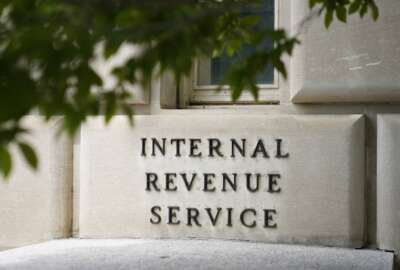Hubbard Radio Washington DC, LLC. All rights reserved. This website is not intended for users located within the European Economic Area.
Labor-management councils putting pieces in place
The national council released a memo Wednesday to help agency managers work with employee unions. The guidance highlights the importance of, and confusion aroun...
By Meg Beasley
Reporter
Federal News Radio
The National Council on Federal Labor Relations released a memo on Wednesday providing agencies with guidance to improve dialogue with labor organizations, especially around pre-decisional involvement. The memo comes a year after President Obama signed an Executive Order establishing the council and mandating the creation of labor-management forums throughout the government.
The memo, co-authored by council chairmen John Berry, director of the Office of Personnel Management (OPM), and Jeffrey Zients, deputy director for Management in the Office of Management and Budget, reminds agencies what the Executive Order requires and outlines steps each organization should be taking to fully implement the directive.
The Executive Order calls for “a non adversarial forum for managers, employees, and employees’ union representatives to discuss government operations [to] promote satisfactory labor relations and improve the productivity and effectiveness of the federal government.”
Berry and Zients agreed that while 2010 was a productive year in terms of establishing the framework for these forums, 2011 needs to be a year of action.
“2010 was largely a set up and process year,” said Zeints. “We laid a lot of the ground work to now pivot in 2011 to really performance — better involvement and better conversations.”
Pre-decisional dilemma
The majority of those conversations will be around pre-decisional involvement, the main focus of the memo. Pre-decisional discussions are a source of confusion for many agencies and labor organizations. By definition, pre-decisional information is not supposed to be discussed before an agency reaches a decision. However, the Executive Order states, “Management should discuss workplace challenges and problems with labor and endeavor to develop solutions jointly, rather than advise union representatives of predetermined solutions to problems then engage in bargaining over the impact and implementation of the predetermined solutions.”
The memo seeks to provide guidance around what is appropriate to talk about before decisions are made. In addition to the general understanding that pre-decisional involvement should take place to the fullest extent practicable, the memo encourages management and labor leaders to reach a mutual understanding about the most effective ways to conduct those confidential discussions.
The memo uses the annual budget process as an example of how pre-decisional involvement can be properly and effectively utilized.
Forums abound
According to the council’s survey of 51 agencies, agencies have established 619 forums and are in the process of setting up another 612. The Defense Department has the most forums, with 248 functional and 498 in progress. The Department of Veterans Affairs has 173 established forums with 94 in progress, and the Homeland Security Department has 44 in place while the Department of Agriculture has 21 in place. The council expects that number to rise as they are constantly receiving additional data.
William Dougan, president of the National Federation of Federal Employees, said that while 1,231 is a “nice” number, he wants to know what percentage of employees are actually represented in those forums.
“In DoD, we have 1,600 bargaining units,” Dougan explained. “So in theory, if we had 100 percent compliance, we should have 1,600 forums, and we’ve got 1,200 total … I guess the concern I have is that while 1,200 sounds like a large number, when you look at the number or bargaining units across the entire government, it’s maybe not as good as what it sounds like on first reading.”
Tim Curry, deputy associate director for Partnership and Labor at OPM, who presented the survey, said those numbers were not available and would be difficult to ascertain.
The Executive Order requires forums to be established at the level of recognition, that is, where a union has been certified as a bargaining unit’s exclusive representative. The number of units varies widely with each agency and multiple units can join in a single forum.
For example, in DoD 135 of the forums are for single bargaining units, 113 are for multiple bargaining units.
One federal official at the council meeting estimated there are about 2,500 bargaining units governmentwide.
The survey also asked about early successes and barriers the forums are facing. Common examples of success included reduction in the number of formal negotiations, less time needed to bargain term agreements, improved labor – management communication and development of joint baseline assessment and agency metrics.
Agencies cited barriers as lack of available time and resources, history of relationship between labor and management and difficulty in scheduling meetings.
Some labor leaders expressed frustration with these explanations for stalled negotiations and wanted to know what options would be available in situations where talks were no longer productive.
“We’re not going to talk this thing into solution if people aren’t going to act differently,” said Gregory Junemann, president of the International Federation of Professional and Technical Engineers. “Is there a possibility that we’ll say we’re not going to acknowledge [an unresponsive group] as a participating player in the national partnership?”
Berry said the negotiations are the shared responsibility of everyone, the two people at the table as well as the members of the council. He is confident that informal communication between parties can resolve 80 – 90 percent of impasses and the remainder can be solved by the council. He added, however, that he would look into legal options for more formal accountability.
Measuring progress
The council also discussed metrics by which to measure the forums’ success. H.T. Nguyen, executive director of the Federal Educational Association, said knowing how many forums there are is a good first step, but the council needs to find out if they are actually facilitating communication.
“What are the metrics?” Nguyen asked. “How do we know if it is working – whether or not they’ve been able to resolve issues? The mere fact that we have forums doesn’t show much. Are there any plans to follow up, to survey both the management and labor side?”
The forums will be evaluated through a series of agency reports to the council. While each agency is to create its own metrics, the council recommended key issues the forums should address. They are issue identification, mission accomplishment and service quality, employee satisfaction and engagement and labor-management engagement.
In December, all forums identified issues, goals and metrics for reporting on a baseline. The next report, due March 31, will inform the council about what the forums have chosen to measure as a baseline. A six-month evaluation of performance against metrics is due Sept. 30 and on Dec. 31 agencies will submit their one-year reports.
“Training Trainers”
The council also reported on a voluntary initiative to further increase the effectiveness of the forums by providing negotiation training to representatives from management and labor.
Currently, forums can make joint requests for a mediator to facilitate their discussions. George Cohen, director of the Federal Mediation and Conciliation Service (FCMS), said 51 mediators have assisted about 100 forums in 2-day sessions. However, Cohen said that it would be impractical for each forum to participate in such a time consuming process for day to day discussions.
Instead, FCMS has worked with the Federal Labor Relations Authority (FLRA) to provide initial training to forums. They hope to develop additional trainers and facilitators to ensure that all forums have the necessary support. Training teams of members from agencies and unions will be developed to provide “soft skills” training around issues such as pre-decisional involvement, interest based problem solving, listening skills and consensus building skills.
Curry said that having joint teams with high level representation from both sides shows top level support from the agency and the union. “It sends the message that at all levels of the agency or the union they walk the walk and talk the talk,” he said.
Trainers will be primarily available to provide routine facilitation at the local level. Curry said national level forums and those dealing with complex issues should continue to utilize the expertise of FCMS and FLRA.
Berry called 2011 a critical year for the forums.
“2010 I would describe as the ‘get it up and running’ year,” he said. “Solve the administrative issues, get the paperwork, get the rules of the road, get the reporting systems, get uniformity to the process. I think we’ve succeeded in our 2010 objectives and are well underway there. 2011 I think is our opportunity to really try to figure out, how do we move the needle on performance to the American public?”
(Copyright 2011 by FederalNewsRadio.com. All Rights Reserved.)
Copyright © 2024 Federal News Network. All rights reserved. This website is not intended for users located within the European Economic Area.




